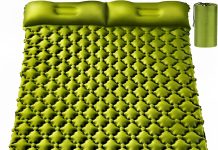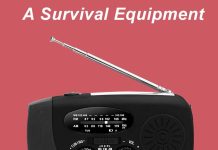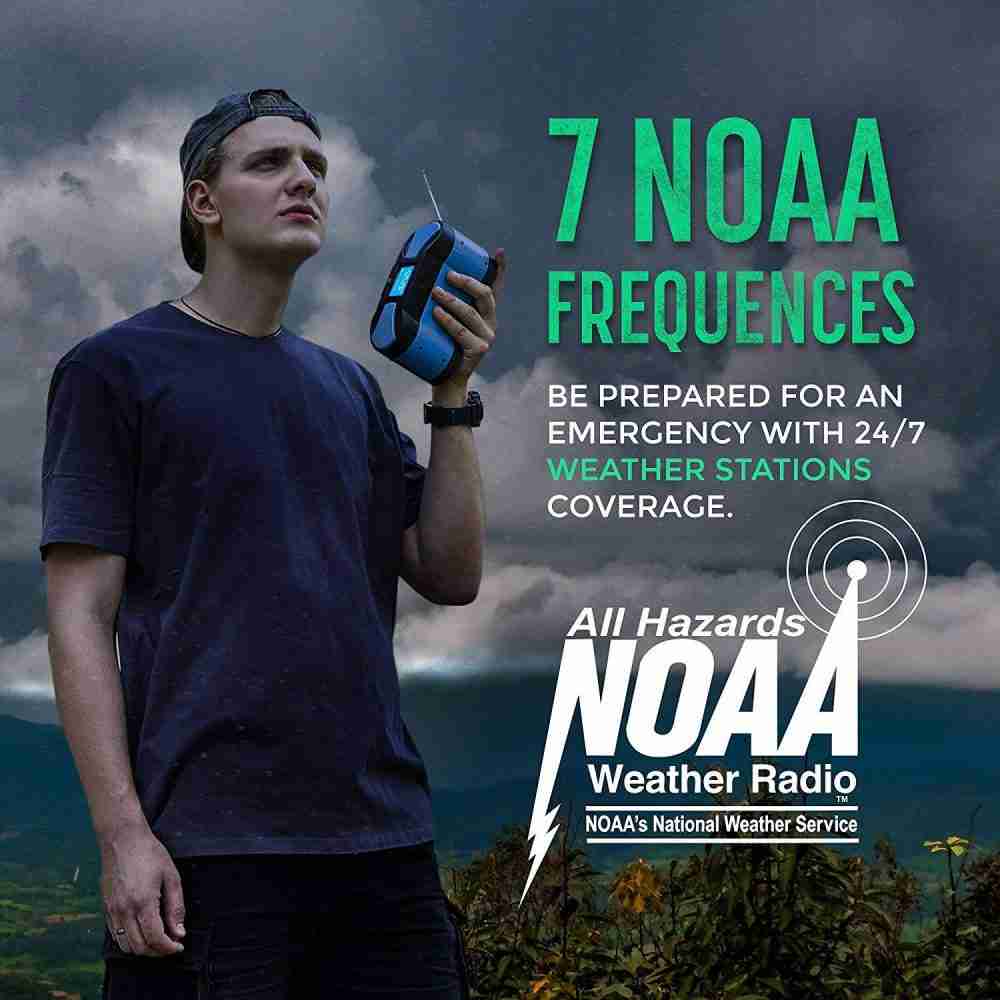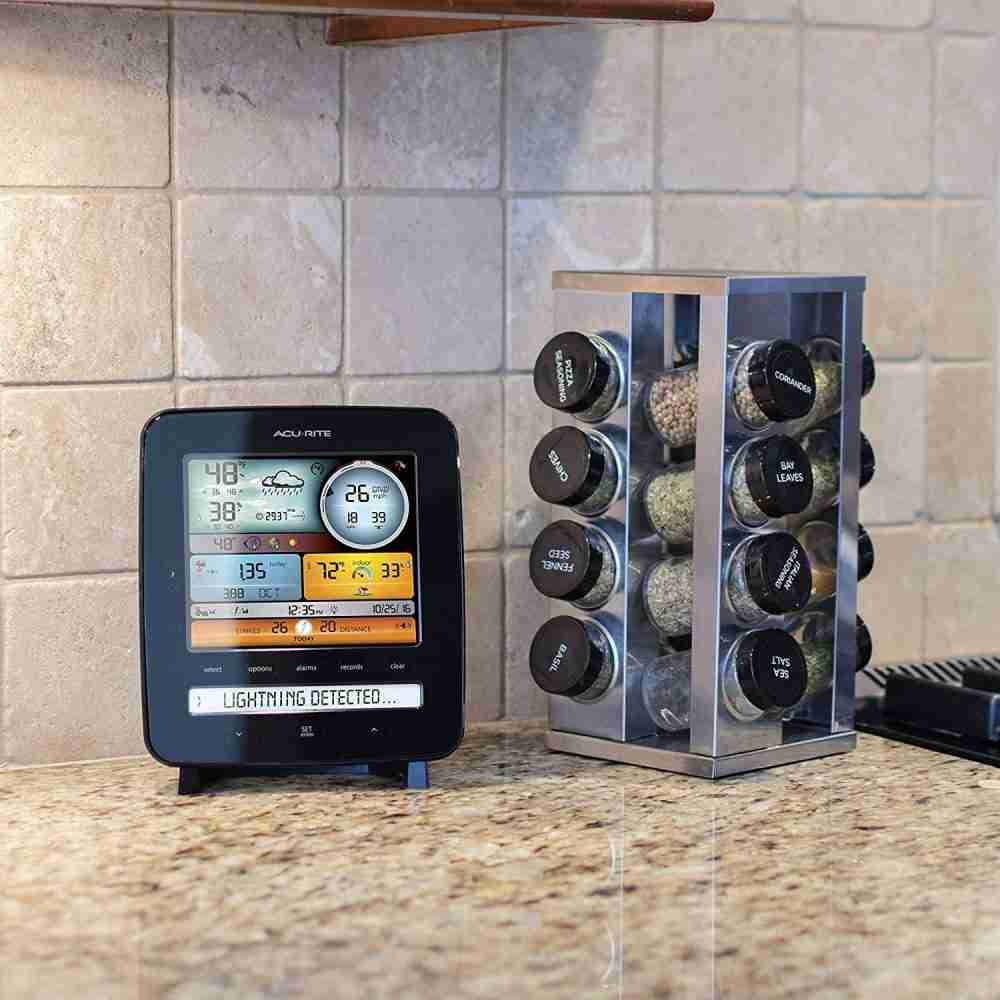In this article, we will be talking about the essential components of a first aid kit that can help you treat minor scrapes and injuries. From bandages and gauze to medications and tools, we will explore the various items that should be included in your kit to ensure you are always prepared for any unexpected mishaps. So, whether you are hiking in the wilderness or simply want to be ready for everyday accidents at home, join us as we uncover the must-have items for your first aid kit.
Bandages
Bandages are an essential component of any first aid kit. They are versatile and can be used to protect wounds, prevent infection, and promote healing. There are various types of bandages available, each serving a specific purpose.
Types of bandages
-
Adhesive bandages: Also known as bandaids, adhesive bandages are the most common type of bandage. They are easy to use and come in different sizes and shapes to fit various wounds. Adhesive bandages are suitable for minor cuts, scrapes, and blisters.
-
Elastic bandages: Elastic bandages are stretchable and provide compression and support. They are commonly used for sprains, strains, and muscular injuries. Elastic bandages help reduce swelling and immobilize injured body parts.
-
Triangular bandages: Triangular bandages are made of a large triangular piece of cloth and can be folded into a sling or used as a pressure bandage. They are versatile and can be used for various injuries, such as fractures or as a makeshift tourniquet.
-
Roller bandages: Roller bandages are long, continuous strips of fabric used to cover and secure larger wounds or dressings. They are often used for injuries that require more coverage, such as deep cuts or burns.
Choosing the right bandage
When choosing a bandage, it is important to consider the type and severity of the injury. Adhesive bandages are suitable for small, superficial wounds, while elastic bandages provide support for sprains and strains. Triangular bandages are multipurpose and can be used for various injuries, while roller bandages are ideal for larger wounds. Consider the size, shape, and location of the injury before selecting a bandage.
Applying a bandage
Properly applying a bandage is crucial for wound care. Follow these steps:
-
Clean the wound: Before applying a bandage, clean the wound with mild soap and water. Gently pat it dry using a clean cloth or gauze.
-
Apply an antibiotic ointment: If the wound is open or prone to infection, apply a thin layer of antibiotic ointment to prevent bacterial growth.
-
Choose the appropriate bandage: Select the right size and type of bandage based on the wound’s size and location.
-
Peel off the backing: If using an adhesive bandage, peel off the backing to expose the adhesive side.
-
Place the bandage over the wound: Carefully apply the adhesive side of the bandage directly over the wound. Ensure it covers the entire wound and creates a seal.
-
Press down firmly: Press the bandage down firmly to ensure it sticks properly and stays in place.
-
Check for snugness: The bandage should be snug but not too tight. It should allow for proper circulation without restricting movement.
Changing a bandage
Bandages should be changed regularly to promote healing and prevent infection. Follow these steps when changing a bandage:
-
Wash your hands: Before removing the old bandage, wash your hands thoroughly with soap and water.
-
Gently remove the old bandage: Peel off the old bandage slowly and carefully to avoid reopening the wound or causing discomfort.
-
Clean the wound: Clean the wound using mild soap and water or an antiseptic solution. Gently pat it dry with a clean cloth or gauze.
-
Apply a fresh bandage: Follow the steps mentioned earlier to apply a new bandage. Ensure the wound is covered completely.
-
Dispose of the old bandage safely: Dispose of the used bandage in a sealed bag or container to prevent the spread of infection.
When to seek medical attention
While minor wounds can be treated at home using bandages, it’s essential to know when to seek medical attention. Consult a healthcare professional if:
- The wound is deep, large, or is not healing.
- The wound is bleeding excessively and does not stop with direct pressure.
- There are signs of infection, such as redness, swelling, warmth, or pus.
- The injury involves deeper tissues, such as tendons or muscles.
- The person is unable to move or use the injured body part.
- The wound is caused by a dirty or rusty object or an animal bite.
- The person is experiencing severe pain or signs of an allergic reaction.
Remember, seeking medical attention when necessary is crucial to ensure proper treatment and prevent complications.
Gauze
Gauze is another essential item in a first aid kit and is commonly used for wound cleaning and dressing. It is a versatile material that is highly absorbent and helps control bleeding.
Types of gauze
-
Non-sterile gauze pads: Non-sterile gauze pads are often used for cleaning wounds or as a divider between wounds and the external environment. They are available in various sizes and can be easily cut or folded to fit the wound.
-
Sterile gauze pads: Sterile gauze pads are individually packaged to maintain their sterility. They are used for covering and dressing wounds to prevent infection. Sterile gauze pads come in different sizes and are ideal for larger wounds that require more coverage.
-
Gauze rolls: Gauze rolls consist of a long strip of folded gauze that can be rolled around a wound or used to secure other dressings. They are available in various widths and are suitable for areas that need constant pressure or protection.
Using gauze to clean wounds
When cleaning a wound with gauze, follow these steps:
-
Wash your hands: Before touching the wound or using gauze, wash your hands thoroughly with soap and water.
-
Put on disposable gloves: To maintain hygiene and prevent infection, put on a pair of disposable gloves.
-
Open the sterile gauze pad: Carefully open the sterile gauze pad without touching the inner surface to prevent contamination.
-
Gently clean the wound: Dampen the gauze pad with sterile saline solution or clean water. Gently clean the wound from the center outward, removing any debris or dirt.
-
Pat dry the surrounding skin: Use a clean, dry gauze pad to pat dry the skin around the wound.
-
Dispose of the used gauze: Wrap the used gauze pad in a clean piece of gauze and dispose of it in a sealed bag or container.
Applying gauze for bigger injuries
For larger wounds that need more coverage, follow these steps:
-
Wash your hands and put on disposable gloves: As with cleaning smaller wounds, always wash your hands and put on disposable gloves before dressing larger wounds.
-
Open the sterile gauze pad: Open the sterile gauze pad, being careful not to touch the inner surface.
-
Place the gauze pad on the wound: Carefully place the gauze pad directly over the wound, ensuring it covers the entire area.
-
Secure the gauze pad: Use gauze rolls or adhesive tape to secure the gauze pad in place. Make sure it is snug but not too tight.
Securing gauze with adhesive tape
When using adhesive tape to secure gauze, follow these steps:
-
Cut a strip of adhesive tape: Measure the required length of adhesive tape and cut it accordingly. The tape should be long enough to extend beyond the gauze pad on all sides.
-
Place the tape on one side of the gauze: Secure one end of the adhesive tape to the gauze pad, making sure it sticks firmly.
-
Wrap the tape around the wound: Carefully wrap the adhesive tape around the wound, ensuring it covers the edges of the gauze pad.
-
Smooth the tape: Smooth out any wrinkles or creases in the tape to ensure a secure and comfortable fit.
-
Repeat if necessary: If additional tape is required to secure the gauze pad, repeat the process on the other sides, overlapping the strips slightly.
Replacing gauze regularly
Gauze should be replaced regularly to maintain cleanliness and prevent infection. The frequency of changing gauze depends on the type and severity of the wound. Generally, it is recommended to replace gauze every 24 to 48 hours or as directed by a healthcare professional. However, if the gauze becomes soaked with blood or other bodily fluids, it should be replaced immediately.
Medications
Medications in a first aid kit help provide relief from pain, prevent infection, and promote healing. It is essential to have the right medications available and know how to use them correctly.
Pain relief medications
Pain relief medications help alleviate discomfort and provide temporary relief from minor aches, pains, and injuries. They can be in the form of tablets, capsules, creams, or gels. Common over-the-counter pain relief medications include acetaminophen, ibuprofen, and aspirin. Follow the manufacturer’s instructions and dosage guidelines when using pain relief medications.
Antibacterial ointments
Antibacterial ointments are used to prevent infection in minor cuts, scrapes, and burns. They contain active ingredients like bacitracin, neomycin, or polymyxin B, which help kill or inhibit the growth of bacteria. Clean the wound before applying the ointment and cover it with a sterile bandage.
Antiseptic solutions
Antiseptic solutions are used to clean wounds and prevent infection. They are available in different forms, including liquid, wipes, or sprays. Common antiseptic solutions include hydrogen peroxide, povidone-iodine, and chlorhexidine. Follow the instructions on the packaging for proper usage.
Burn creams
Burn creams provide soothing relief and help prevent infection in minor burns. They are formulated to cool the burn and alleviate pain. Burn creams often contain ingredients like aloe vera, lidocaine, or silver sulfadiazine. Apply a thin layer of the cream to the burn and cover it with a sterile dressing.
Allergic reaction medications
Certain individuals may have allergies or hypersensitivity to certain substances. In such cases, it is important to have antihistamines, such as diphenhydramine, available in the first aid kit. These medications can help alleviate symptoms of allergic reactions, such as itching, hives, or swelling. Follow the recommended dosage guidelines when administering allergic reaction medications.
Tools
First aid kits should contain essential tools to aid in various first aid procedures. These tools help ensure proper wound care, hygiene, and safety.
Tweezers
Tweezers are useful for removing splinters, debris, or foreign objects from wounds. They should be made of stainless steel and have a pointed tip for precision. Before using tweezers, clean them with rubbing alcohol to maintain cleanliness and prevent infection.
Scissors
Scissors are essential for cutting bandages, tape, or clothing away from wounds. It is important to have blunt-ended scissors in the first aid kit to minimize the risk of accidentally injuring the person being treated. Keep the scissors clean and sterile by wiping them with alcohol before and after use.
Thermometer
A thermometer is used to measure body temperature. A fever is often an indication of an underlying infection or illness. Digital thermometers are quick, accurate, and safe to use. Ensure that the thermometer is cleaned with alcohol or soap and water after each use to prevent cross-contamination.
Cotton swabs
Cotton swabs, also known as Q-tips, are handy for cleaning wounds, applying ointments, or removing debris. They should be sterile and individually wrapped to minimize the risk of contamination. Avoid using cotton swabs directly on wounds to prevent fibers from getting into the wound.
Disposable gloves
Disposable gloves are essential for infection control and preventing the spread of germs. They should be made of latex-free material to avoid allergic reactions. Put on a pair of disposable gloves before cleaning wounds or administering medications. Dispose of the gloves properly after use.
Cleaning the Wound
Proper wound cleaning is crucial to prevent infection and promote healing. It is important to follow the correct procedure to ensure cleanliness and minimize the risk of complications.
Washing hands
Before cleaning a wound, it is important to wash your hands thoroughly with soap and water. This helps remove any bacteria or dirt on the hands and prevents the spread of germs to the wound.
Cleaning the wound with soap and water
Clean the wound with mild soap and water to remove bacteria, debris, or dirt. Gently apply the soap to the wound and surrounding area, then rinse it with clean water. Avoid scrubbing the wound vigorously as it may cause pain or slow down the healing process.
Using antiseptic solutions
Antiseptic solutions can be used after cleaning the wound with soap and water to further disinfect the area. Apply a small amount of antiseptic solution to a clean cloth or gauze pad and gently wipe the wound, ensuring all sides are covered. Avoid applying antiseptic solutions directly to the wound.
Removing debris with tweezers
If there are visible debris or foreign objects in the wound, use sterilized tweezers to remove them carefully. Clean the tweezers with rubbing alcohol before and after use to avoid introducing bacteria into the wound. Gently grasp the debris or object and pull it out in the same direction it entered the wound.
Applying Bandages
Bandages are used to protect wounds, control bleeding, and promote healing. Proper application of bandages is essential to ensure wounds are covered adequately and minimize the risk of infection.
Preparing the wound
Before applying a bandage, ensure the wound is clean and dry. If necessary, clean the wound with mild soap and water, and pat it dry with a clean cloth or gauze.
Using sterile bandages
Using sterile bandages is crucial to prevent the introduction of bacteria or other contaminants into the wound. Open the sterile bandage packaging carefully, making sure to avoid touching the inside of the packaging or the bandage itself.
Applying different types of bandages
Different types of bandages can be used depending on the size and location of the wound. For smaller wounds, adhesive bandages are suitable. Apply the adhesive bandage directly over the wound, ensuring it covers the entire area. For larger wounds, such as deep cuts or burns, roller bandages or gauze pads can be used. Secure the bandage neatly and ensure it provides adequate coverage and protection.
Securing the bandage
To ensure the bandage stays in place, it is important to secure it properly. Adhesive bandages generally have an adhesive strip that helps keep them in place. For other types of bandages, use adhesive tape or a self-adhesive fabric wrap to secure them. Make sure it is snug but not too tight to allow proper circulation and movement.
Using Gauze
Gauze is a commonly used material in wound care. It is highly absorbent and helps control bleeding, reduce the risk of infection, and promote healing.
Cleaning and disinfecting wounds with gauze
Gauze can be used to clean and disinfect wounds before applying dressings or bandages. Follow the steps mentioned earlier for using gauze to clean wounds. Ensure the gauze is damp, but not dripping, with antiseptic solution or sterile saline solution. Gently wipe the wound, removing any debris or dirt, and discard the used gauze properly.
Covering the wound with gauze
For wounds that require more coverage, gauze pads or rolls can be used to cover the entire wound. Place the gauze pad directly over the wound and ensure it is aligned properly. Avoid applying excessive pressure to the wound and secure the gauze pad with adhesive tape or a self-adhesive fabric wrap.
Securing gauze with adhesive tape
To secure gauze, adhesive tape can be used. Cut a strip of adhesive tape long enough to extend beyond the edges of the gauze pad. Secure one end of the tape to the gauze pad, ensuring it sticks firmly. Carefully wrap the tape around the wound, ensuring it covers the edges of the gauze pad. Smooth out any wrinkles or creases in the tape to ensure a secure fit.
Using Medications
Medications play a vital role in first aid by providing relief, preventing infection, and aiding in the healing process. It is important to use medications correctly and follow the recommended guidelines.
Choosing the right medication
Choosing the right medication depends on the type of injury or condition. Pain relief medications can help alleviate discomfort, while antibacterial ointments and antiseptic solutions help prevent infection. Burn creams provide soothing relief for burns, and allergic reaction medications help alleviate symptoms of allergies. Refer to the specific medication’s instructions for proper usage and dosage recommendations.
Applying pain relief medications
Topical pain relief medications, such as creams or gels, can be applied directly to the affected area. Follow the manufacturer’s instructions for proper application. Oral pain relief medications should be taken according to the recommended dosage and guidelines. If there are any concerns or questions, consult a healthcare professional.
Using antibacterial ointments
To prevent infection in minor cuts, scrapes, or burns, apply a thin layer of antibacterial ointment to the affected area. Gently spread the ointment to cover the wound and surrounding skin. Cover the area with a sterile bandage or gauze pad to promote healing.
Applying burn creams
Burn creams are specifically formulated to provide relief for minor burns. Apply a thin layer of the burn cream to the burn site. Gently spread the cream over the affected area, ensuring it covers the entire burn. Cover the burn with a sterile dressing or gauze pad. If the burn is severe or covers a large area of the body, seek immediate medical attention.
Essential Tools in a First Aid Kit
A well-equipped first aid kit should contain essential tools to effectively treat minor injuries and provide necessary care.
Tweezers for removing splinters
Tweezers are essential for removing splinters, debris, or foreign objects from wounds. They provide precision and control while minimizing the risk of further injury or contamination.
Scissors for cutting bandages
Scissors are necessary for cutting bandages, tape, or clothing away from wounds. Blunt-ended scissors are preferred to avoid accidental injuries when cutting near the skin.
Thermometer for measuring body temperature
A thermometer is a valuable tool for measuring body temperature. It helps identify fever, which can be an indicator of infection or illness. Digital thermometers are reliable, easy to use, and provide quick and accurate temperature readings.
Cotton swabs for cleaning wounds
Cotton swabs, also known as Q-tips, are useful for cleaning wounds, applying ointments, or removing debris. They should be sterile and individually wrapped to maintain hygiene and prevent contamination.
Disposable gloves for infection control
Disposable gloves are essential for infection control and preventing the spread of germs. They should be made of latex-free material to avoid allergic reactions. Disposable gloves should be used when cleaning wounds, applying medications, or handling bodily fluids.
Additional Tips
To ensure the effectiveness and longevity of your first aid kit, consider the following tips:
Keeping the first aid kit clean and organized
Regularly check and clean your first aid kit to ensure the contents remain clean, sterile, and in good condition. Check for any expired or damaged items and replace them as necessary. Keep the kit in a clean, dry, and easily accessible location.
Checking expiration dates
Check the expiration dates of medications and materials in the kit regularly. Expired items may lose their effectiveness or even be harmful. Replace any expired items promptly to ensure the kit remains fully functional.
Knowing when to replace items
Certain items, such as adhesive bandages or gloves, may need to be replaced more frequently than others. Inspect these items regularly for signs of wear or damage and replace them as needed. Additionally, consider the frequency of use and restock the kit accordingly.
Keeping a first aid manual or guide
Include a first aid manual or guide in your kit. This resource can provide valuable information and guidance in handling different types of injuries or emergencies. Familiarize yourself with the manual or guide, and ensure it is up to date with current best practices.
By having a well-stocked first aid kit and knowing how to properly use its contents, you can effectively treat minor scrapes and injuries. Remember, if an injury is severe or you are unsure how to handle it, seek medical attention immediately.







































